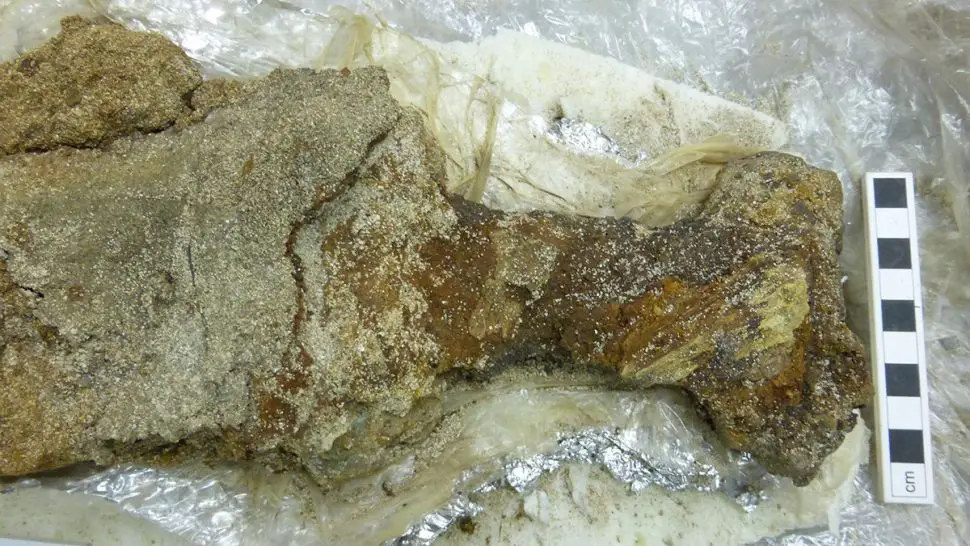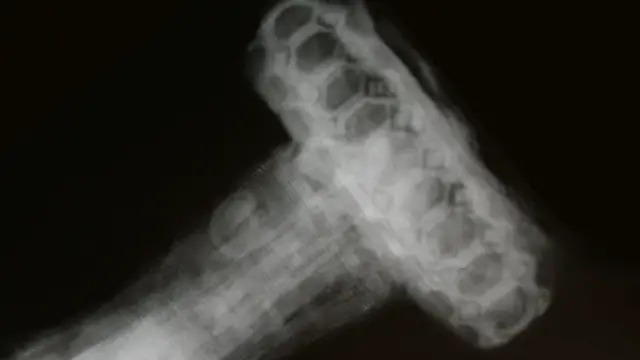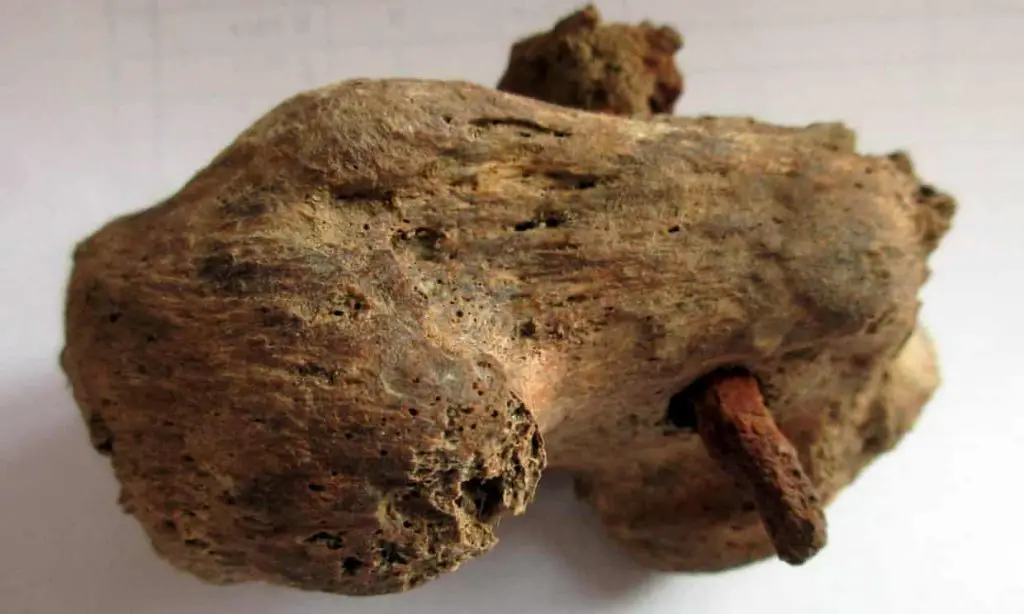Viking Sword: In March of 2015 a landowner in Orkney, in the Northern Isles of Scotland, found a grave in a sand ridge on his property. When he contacted archeologists at AOC Archaeology, they discovered a hidden cemetery of Viking Age burials.
One burial was a very rare Viking boat burial, and an opulently adorned pagan burial that included a rare sword, arrows, a shield boss.
Contents

There was also a Borre-style buckle, Viking-age art style featuring symmetrical ribbon interlace often ending in cat-like heads, single beasts gripping borders, and ring-chain patterns from around the mid-9th to late 10th century according to britishmuseum.org.
Other items crafted in this art style would include brooches, sword sheaths, pins, and pendants. Called the Mayback sword because of where it was found, it has turned out to be a 9th century Norse sword.
Viking Shield
The sword was in its sheath with the point near the owner’s face while usually, the hilt was on the chest with the tip pointing downward according to historicenviorment.scot. The shield boss, the center and most important part of a Viking shield was on the chest.
The sword, a Pedersen Type D, was produced from the 8th to the 11th century and is one of the heaviest swords on record; it would only have been used by the strongest men. The weapon was heavily encrusted with rust as well as minerals from the wooden sheath which had disintegrated long ago. Because of this, the true image of the sword could only be seen with x-rays as conservators were didn’t want to clean the thousand year old iron blade in fear it would fall apart.
X-Ray
“Although it’s currently only visible via X-ray, the guards [at each end of the hilt] appear highly decorated,” the researchers wrote in the statement. “A series of elongated octagons and possibly raised lozenges [diamond shapes] have been used to create a honey-comb-like pattern, most likely using contrasting metals.”
This type of sword, called a Pedersen Type D, is the “heaviest from the Viking Age” and required a “substantial hilt to stabilize them,” the researchers wrote. “We know of at least 30 of these blades throughout the Viking world,” they added. “Approximately half have been found in Norway, with others discovered as far west as Dublin, and as far east as Slovakia, Poland and Russia.”
Historic Environment Scotland

The x-rays showed a highly ornate and heavy hilt with a diamond pattern that is most likely made from different types of metals in an intricate decorative pattern. Only thirty of these types of swords are known to exist with the most found in Norway but as far away as Dublin to the east and Russia to the west.
Fragile
Work on the artifact is ongoing and slow because of the sword’s fragility and the underside has not yet been studied. Andrew Morrison, Caroline Paterson, and Dr. Stephen Harrison of AOC Archaeology took the surrounding soil with the sword just to make sure there were no signs left behind which could answer the many question the researchers have according to archeology.org.
“Possibly one of the most exciting and most complex artifacts [found at the site], this rare survival will have many stories to tell,” claims Morrison on smithsonianmag.com. “Most Viking Age scabbards are made up of an inverted fleece lining next to the blade. This would have been contained within a sheath made from thin lathes of wood, then bound—possibly with strips of a fine textile.”
Early Swords
Most Viking swords of this type have a total length at about three and a half feet with the blade length at just under three feet. The early swords from this period are often called Frankish or Carolingian as they were produced by the Frankish Empire during the Carolingian era noted for the best quality weapons found in Central and Northern Europe during the Viking Age according to Viking Age Swords from Telemark, Norway.
An Integrated Technical and Archaeological Investigation by University of Oslo’s Irmelin Martens, a former professor in Nordic Archaeology at the Museum of Cultural History; Eva Elisabeth Astrup, former head of the Conservation department at the Museum of Cultural History, Kjetil Loftsgarden, an associate professor at the Museum of Cultural History and Vegard Vike, an archaeological conservator at the Museum of Cultural History at press.nordicopenaccess.no.
High Status
As ornate swords were extremely expensive at the time it is safe to assume the occupant of the grave was an important person or even royalty.
If you like this article, then please follow us on Facebook and Instagram
Another Article From Us: Is the William Wallace Sword Real?
Historic Environment Scotland is helping to fund the research and conservation on the artifacts. Thorough study of bone analysis and radiocarbon dating to help determine the age of the remains of each piece.





